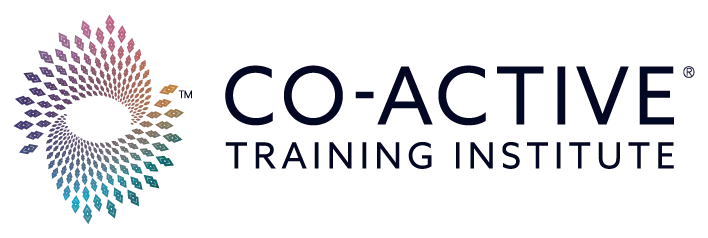You landed a coaching client—congratulations! But what’s the right next step? Before you meet with your client for the first time, you want to gather key information about the client and their desires for the coaching relationship.
A coaching intake form is a structured document that gathers information from new clients before your initial session. It is a foundation for the coaching relationship because it helps you and the client establish clarity, set expectations, and streamline the discovery process. Whether you are an aspiring coach just beginning your coaching business, or a seasoned coach wanting to increase your efficiency, a practical tool like an intake form will help.
The Benefits of A Well-Crafted Coaching Intake Form
Before we describe what should be included in the form, let’s set the stage for why the coaching intake form is important. Well-crafted intake forms:
- Help coaches understand a client’s background, goals, and challenges. By collecting these details upfront, you can gain insight into the client’s experiences and motivations.
- Save time by streamlining the discovery process. A well-designed template will help you gather essential information efficiently, allowing early sessions to focus on meaningful progress rather than basic introductions.
- Build trust. Clients see that you care to listen and understand—even before the first session.
- Create client clarity. An intake can help a client get more grounded and clarify their desired coaching outcomes.
Essential Sections & Questions of Your Coaching Intake Form
A coaching client intake form should cover several key areas to provide a well-rounded understanding of the client. Below are sections and questions we suggest your form includes, and can pertain to numerous niches.
Basic Personal Information
These basic details help with logistics and communication.
- Full Name
- Nickname
- Age
- Preferred pronouns
- Marital Status
- Contact Information
- Preferred Communication Method
- Time Zone
Professional Background and Current Situation
Understanding the client’s career path and present challenges helps tailor the coaching approach.
- What motivated you to seek coaching at this time?
- What aspects of your life energize you, and which ones drain you?
- How would you describe the gap between where you are now and where you want to be?
- What previous attempts have you made to address your current challenges?
Goals and Expectations
Clearly defining goals laser-focuses the coaching process to be growth-oriented and effective.
- What are your top three goals for coaching?
- What have you tried so far to move toward these goals?
- What would success look like for you?
- Are there any skills or habits you want to start, develop, or improve?
- What specific outcomes would make this coaching investment worthwhile for you?
- How will you know you have achieved success in our coaching relationship?
- What is your timeline for achieving these changes, and what contributes to this timeline?
Strengths and Challenges
A self-assessment helps new clients identify areas of growth and resilience.
- What specific obstacles are you currently facing?
- When facing challenges, what strengths consistently help you overcome them? Please provide a recent example.
- What patterns or behaviors have you identified as your biggest growth opportunities? How do these show up in your daily life?
- In what situations do you feel most confident and capable? What specific elements make these situations different?
- If you resolve one of your challenges through coaching, which would impact your life or career most significantly? Why?
Motivation and Readiness
Assessing the client’s readiness to grow will give you a picture of their commitment and engagement.
- What specific events or realizations have prompted you to seek coaching at this particular time?
- On a scale of 1-10, how ready are you to make meaningful changes in your life? Please explain your rating.
- What successes need to happen in our first three months of coaching for you to feel this investment is worthwhile?
- What concerns or reservations do you have about the coaching process? How might these impact your level of commitment?
Coaching Preferences and Learning Style
Understanding how clients learn and respond to feedback can help you be agile and create an effective and tailored coaching strategy.
- Describe a time when you learned something new that really “clicked” for you. What made that experience effective?
- How do you prefer to be challenged? Please provide examples of what has worked well in the past.
- How do you prefer to be held accountable? Please provide examples of what has worked well in the past.
- What boundaries do you need to communicate upfront to ensure our coaching relationship is effective?
- When I offer feedback, what approach can I take that helps you stay open and curious rather than defensive?
- What do you need of me to feel safe in vulnerable moments?
Additional Comments and Insights
Providing space for extra information helps clients share anything important to them that might not have been covered in the structured sections.
- Is there anything else you want to share to help me understand you better as a potential client?
- What questions do you have about the coaching process that this form has not covered?
- Are there any specific topics or areas you prefer not to discuss during our coaching relationship?
- What else would you like me to know about your current situation that might impact our coaching work?
What Not To Ask In An Intake Form
While a coaching questionnaire should be thorough, some questions should be avoided on this initial form. You don’t need to approach every topic at the outset. For instance, we suggest you avoid asking:
- Personal or sensitive questions beyond the scope of a coaching relationship. Avoid questions that dive too deeply into personal traumas unless coaching specifically focuses on emotional resilience.
- Too many closed questions. Open-ended questions encourage clients to reflect and share more meaningful insights.
- Questions that could lead to bias. Avoid leading questions that assume a particular mindset or outcome.
- Questions forcing clients to reveal trauma or deep vulnerabilities prematurely. Coaching should be a safe space for growth, and some topics require trust-building before discussion.
- Deep biographical information. While background is useful, excessive personal history can feel invasive and unnecessary.
Download the Co-Active Coaching Intake Form Template
Access Practical Co-Active Resources
For more than thirty years, Co-Active Training Institute has been equipping coaches with the leading tools, framework, and training for purposeful work and meaningful life transformation. As leaders in the coach training industry, we value equipping coaches with tools that uplevel the effectiveness of their businesses, no matter their niche. Check out our Resources Page for demos, webinars, and more ideas to increase the value of what you offer to your clients.

